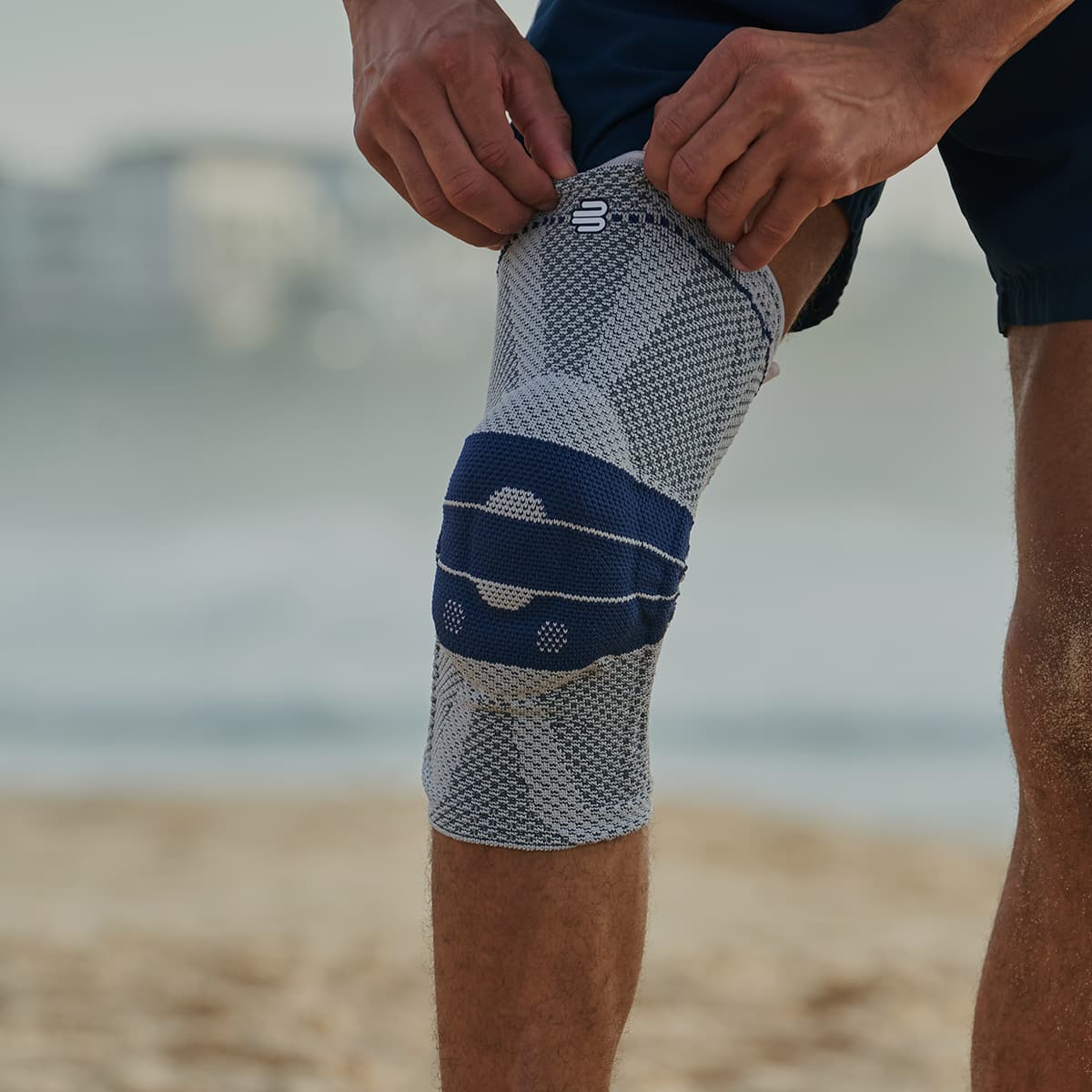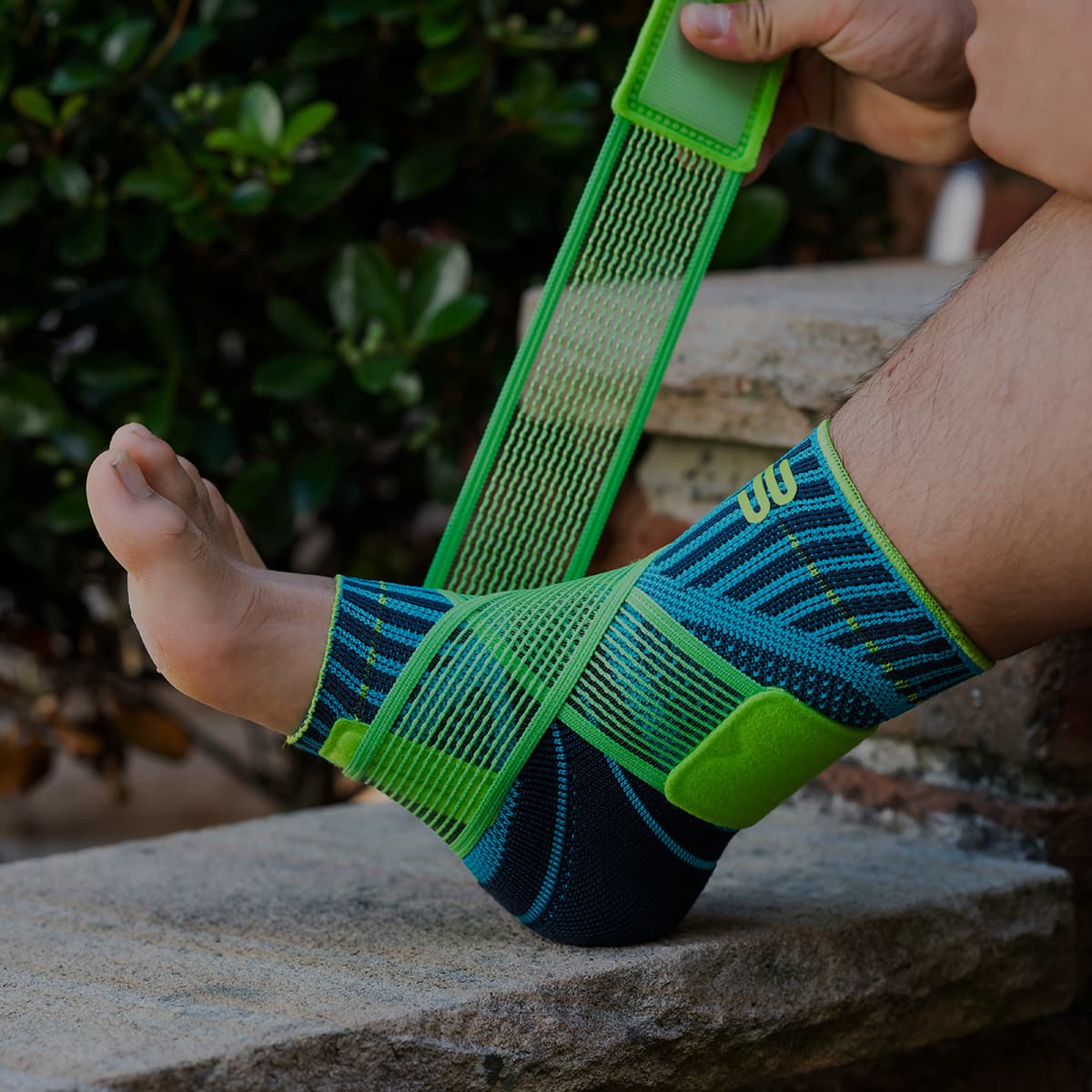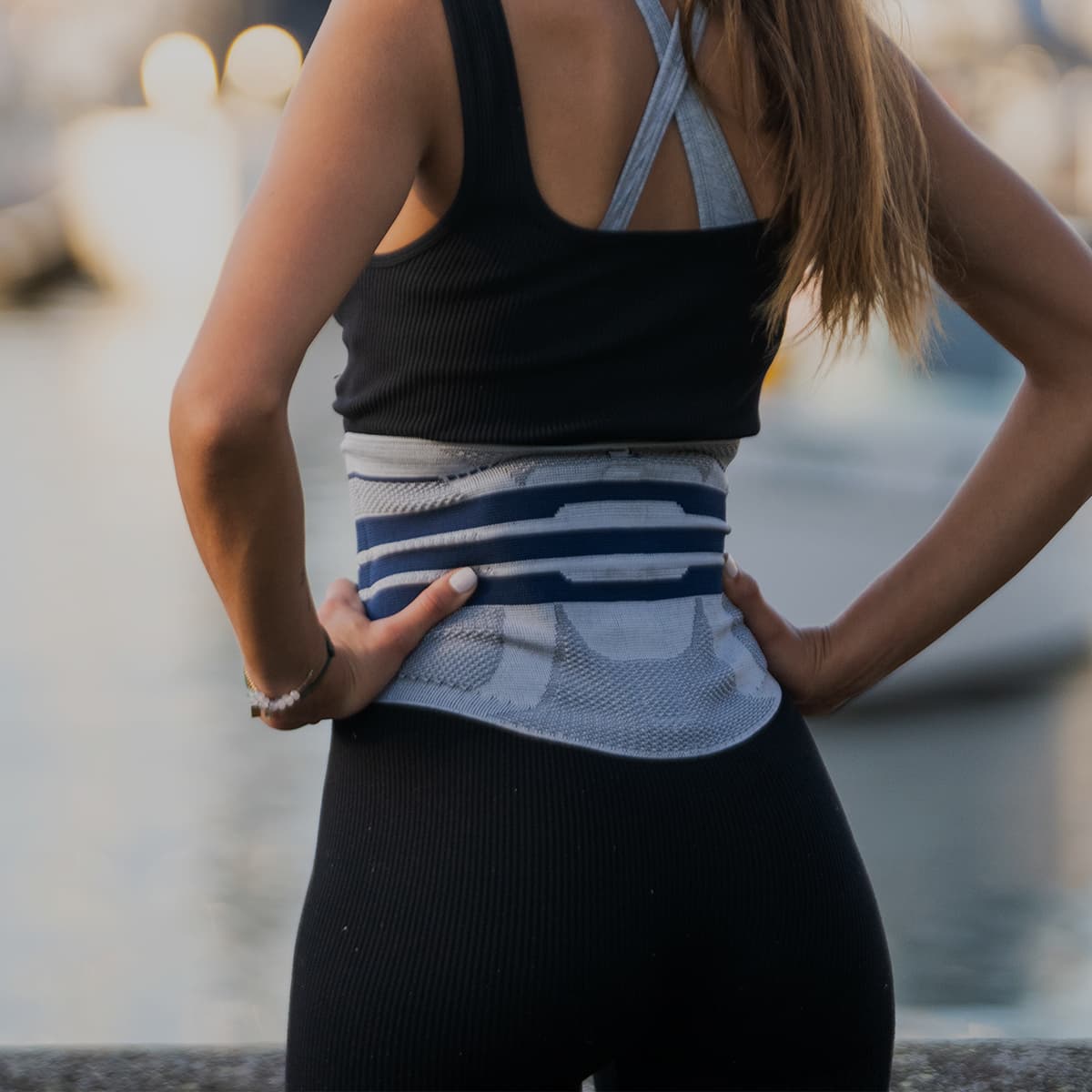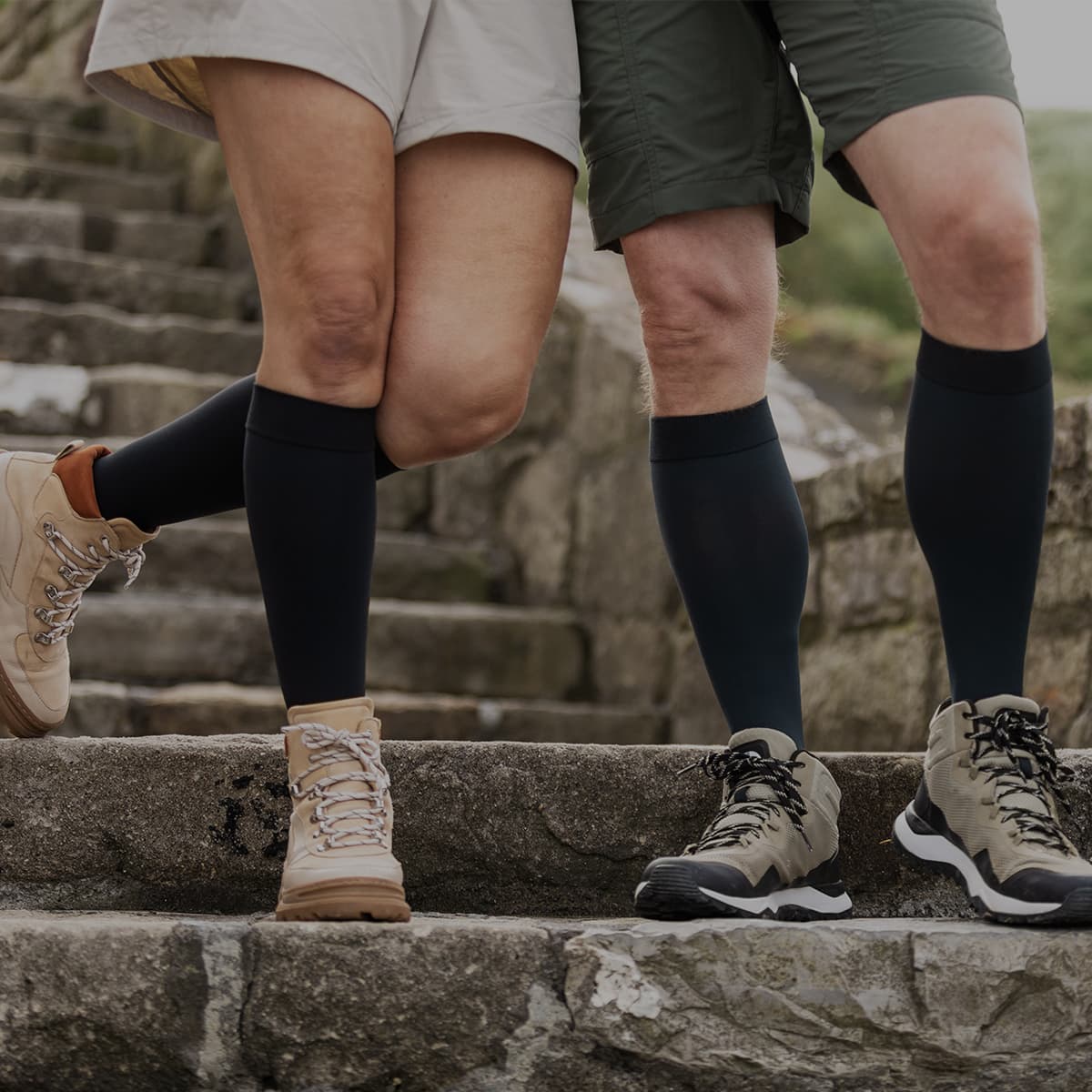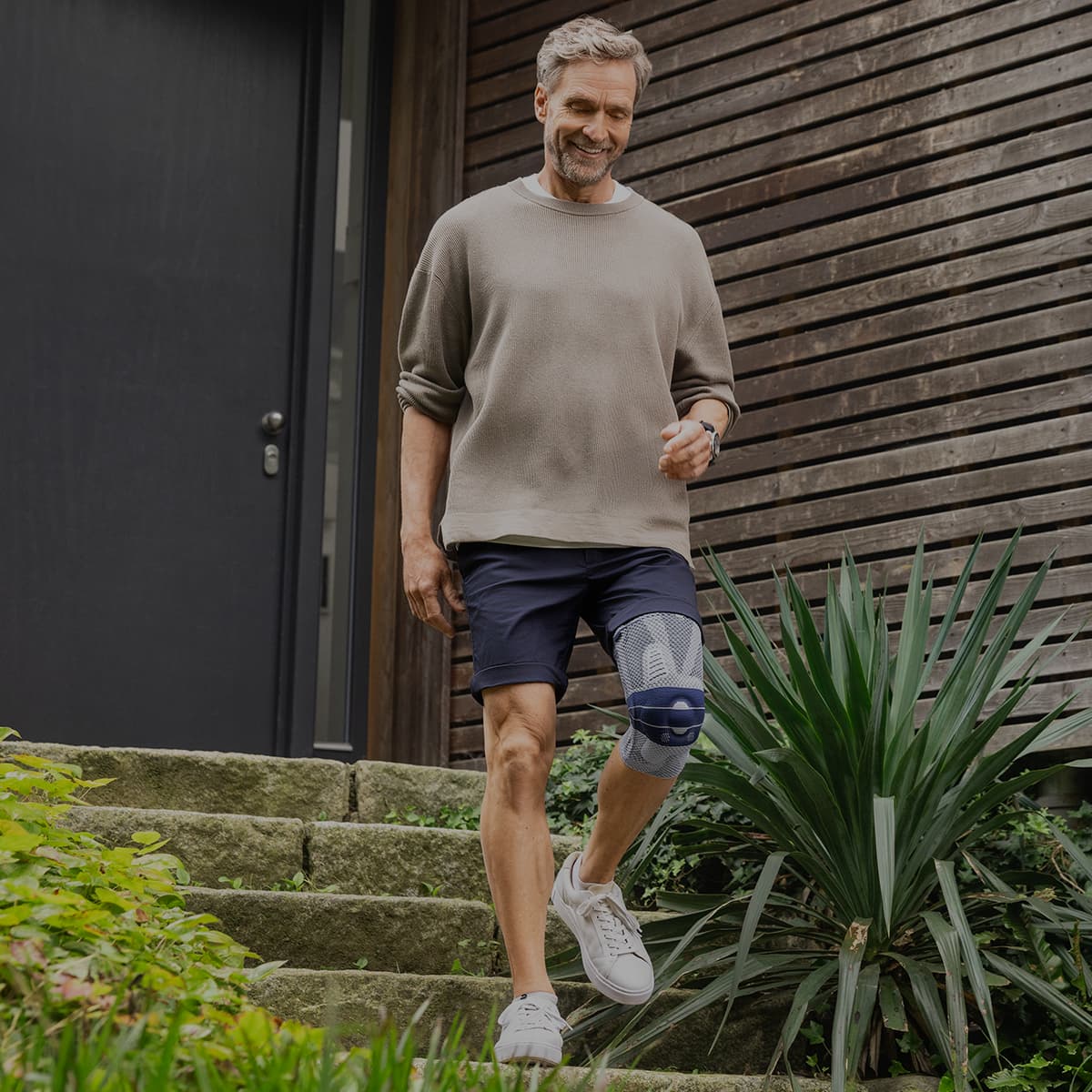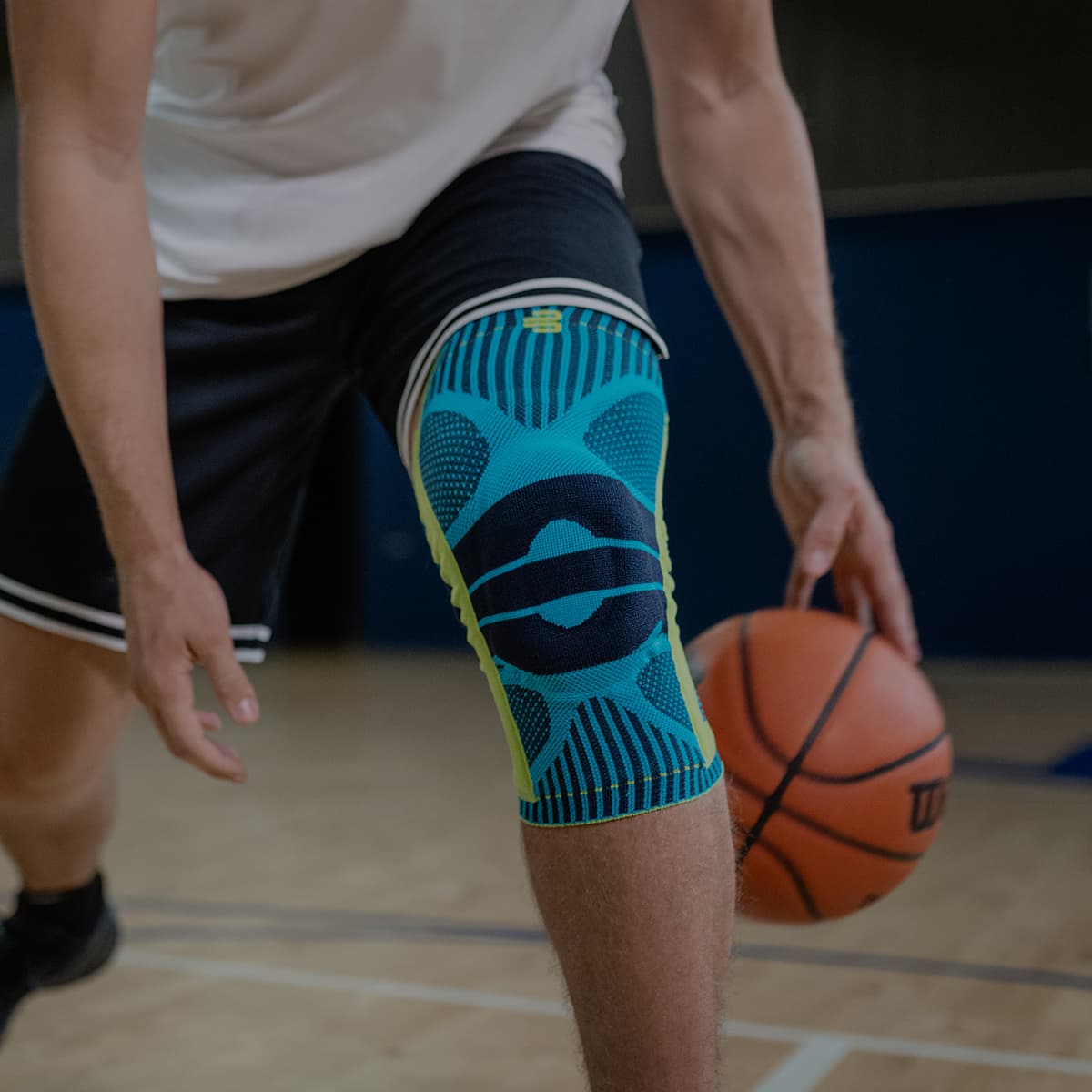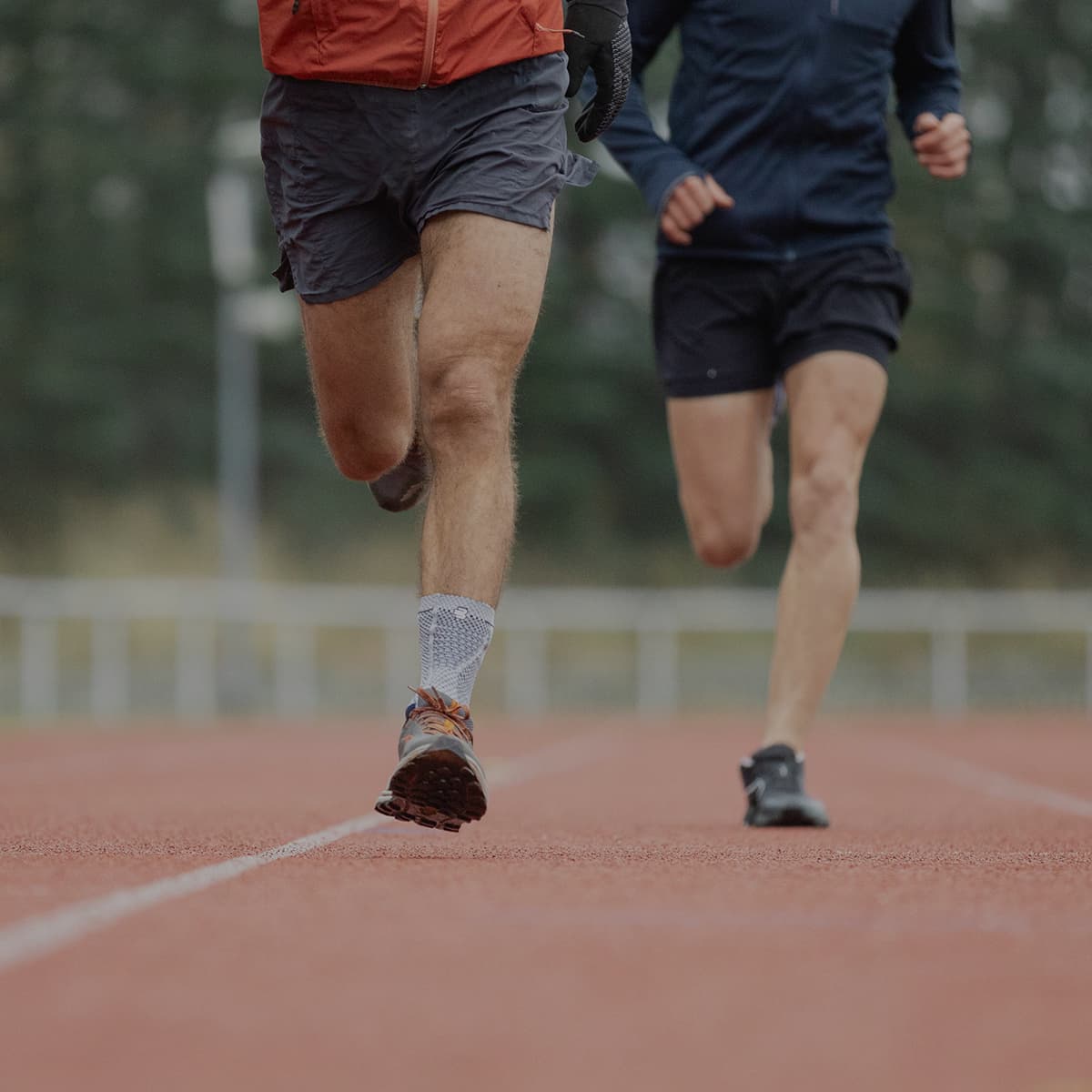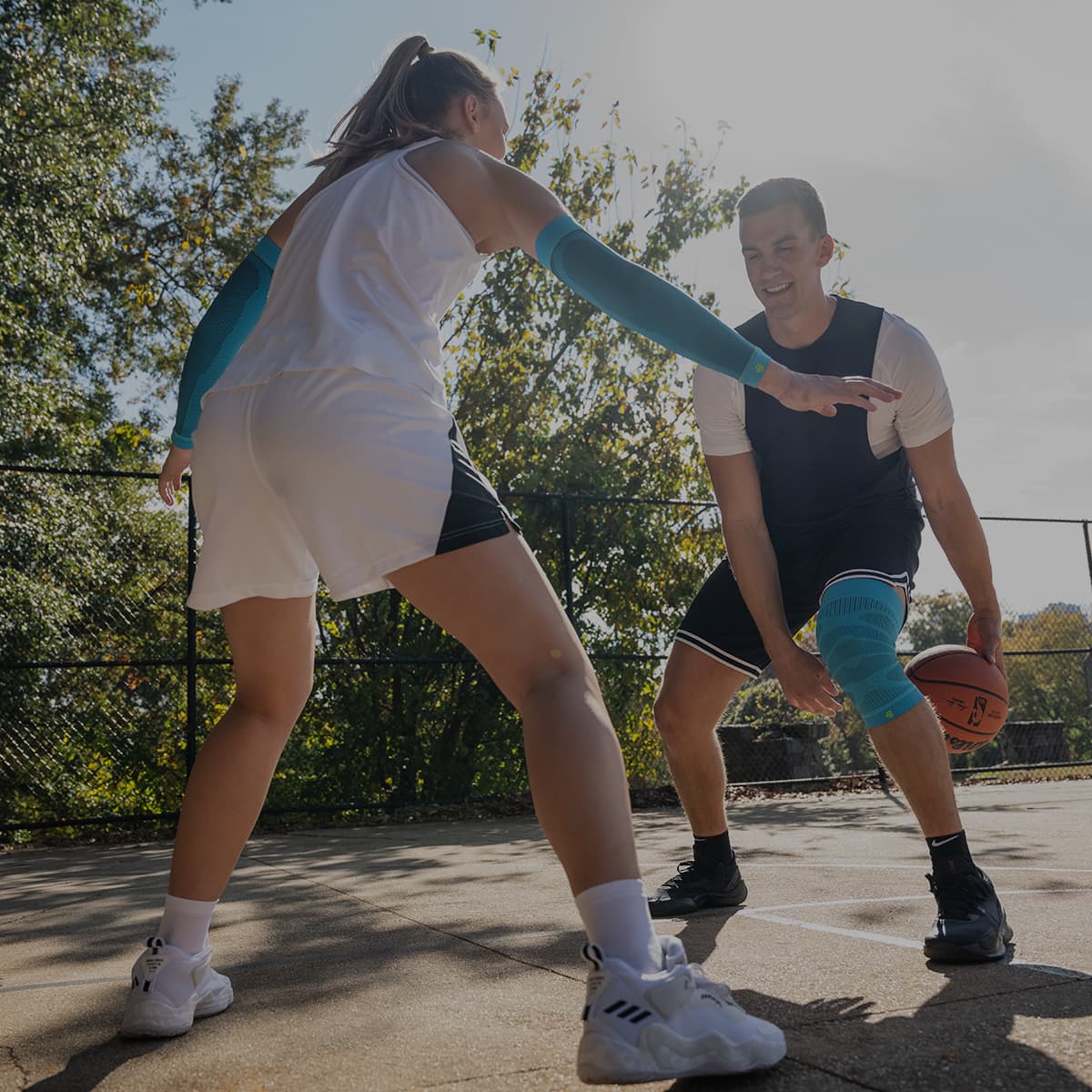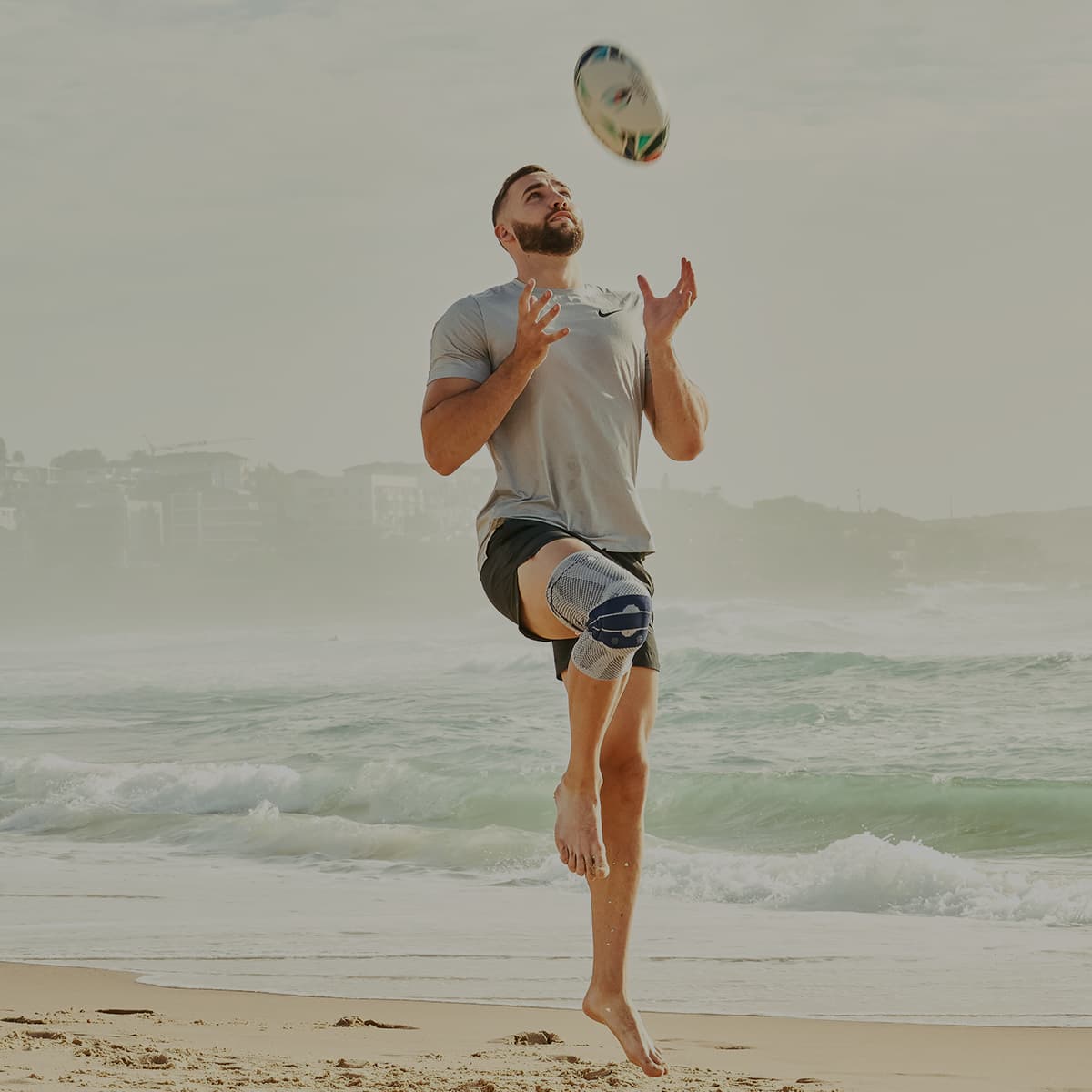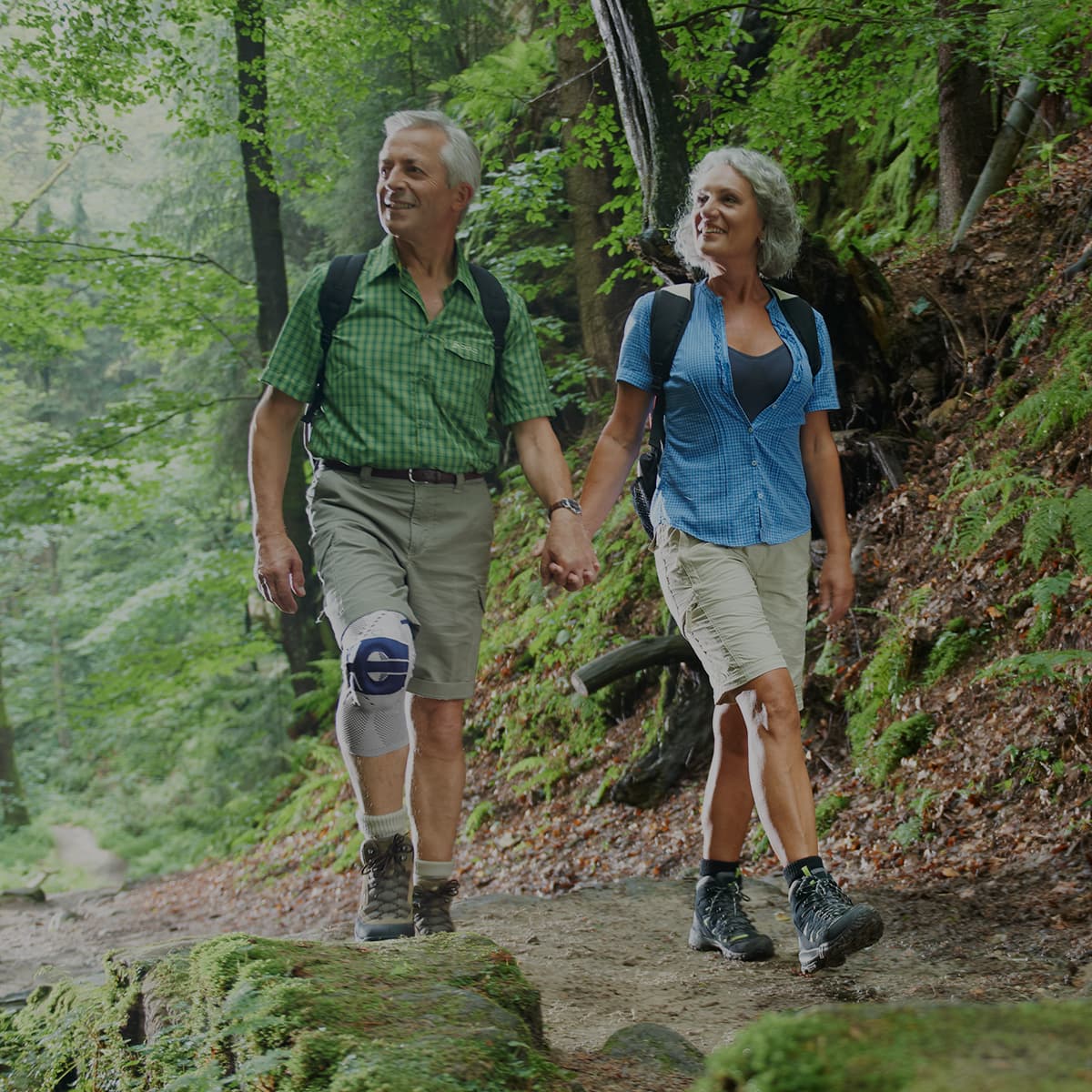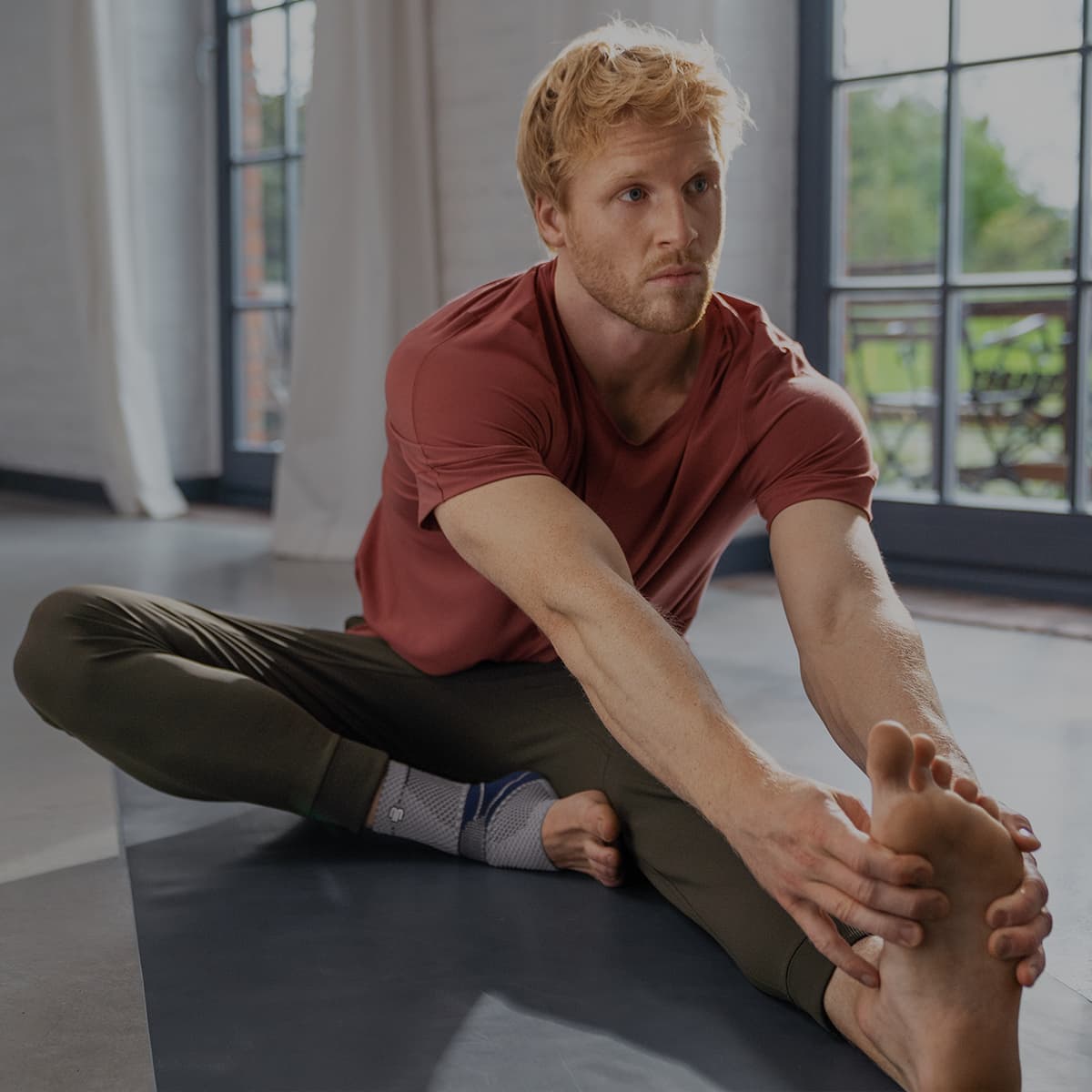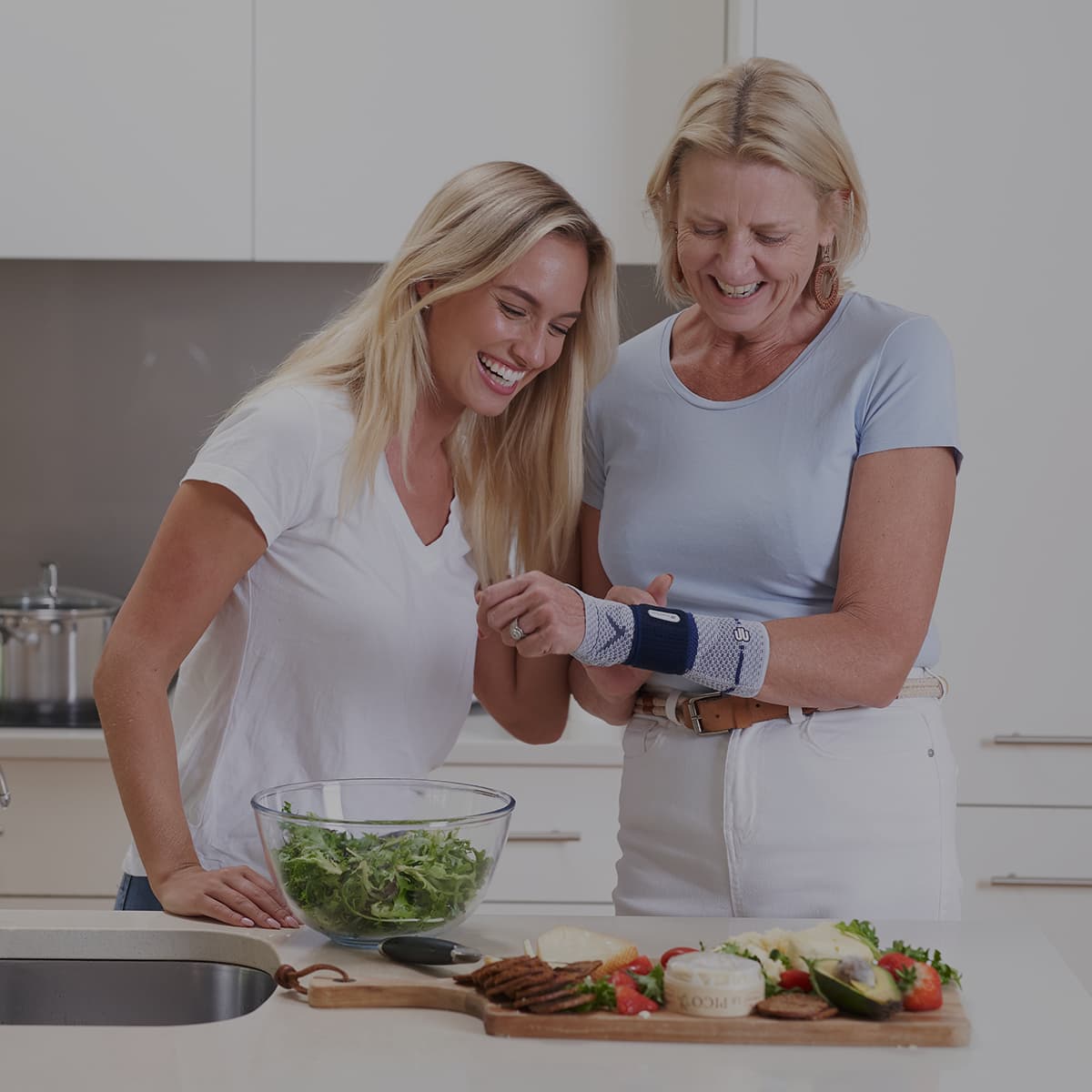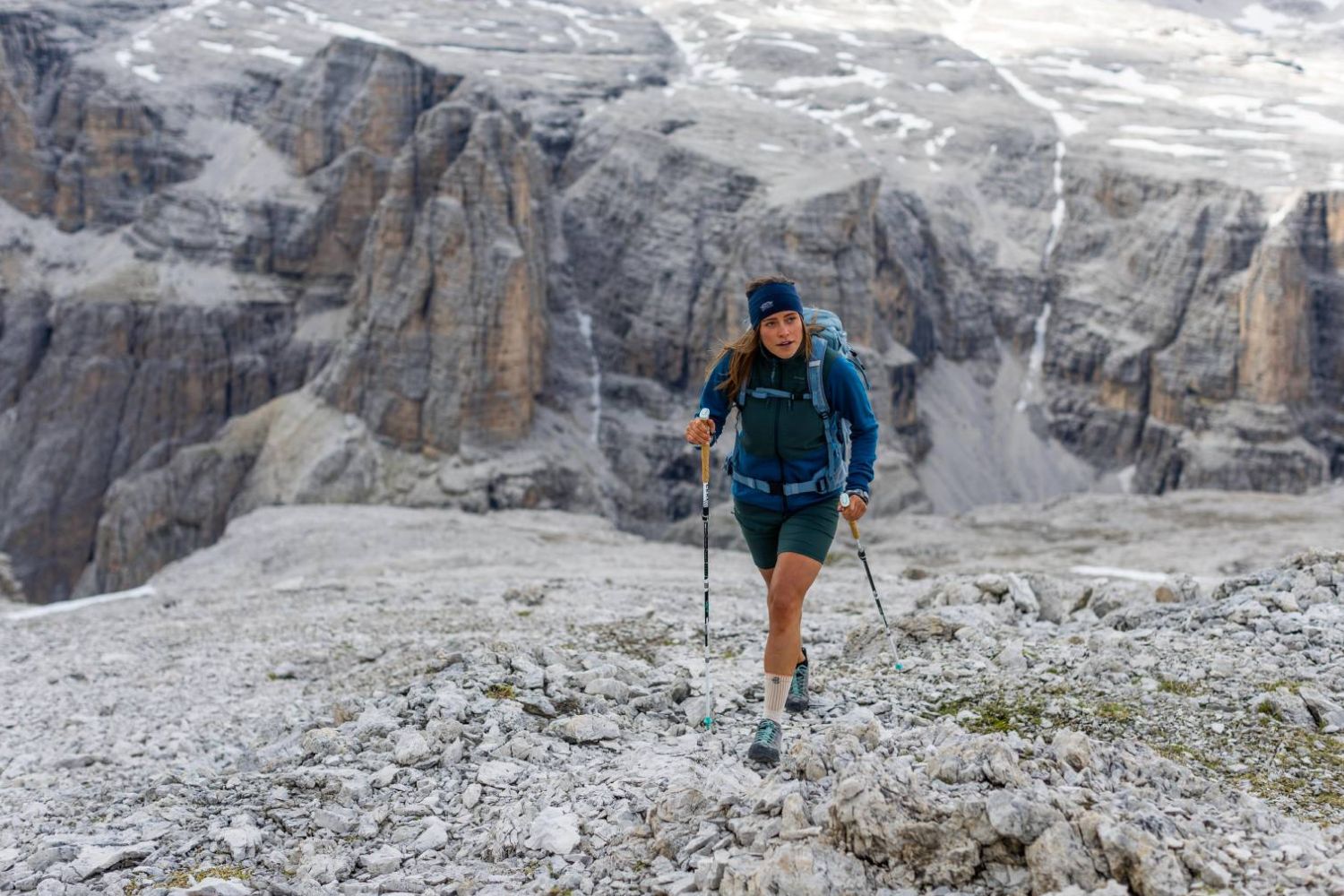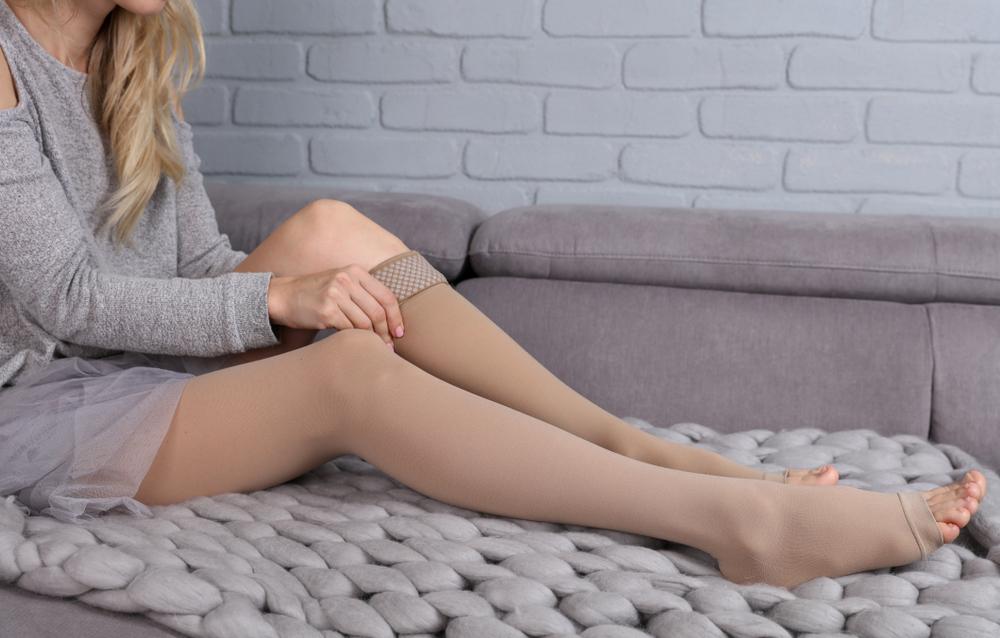Lunge from the floor is a great rehabilitative exercise for strengthening the muscles that move and stabilise the knee and hip, including the quads, glutes, hamstrings, and core. Like partial lunges, lunging from the floor puts less stress on the muscles and joints than regular lunges, making it a good exercise for beginners and those with a knee injury.
The benefits of touching your knee to the floor
Touching the floor with your knee deepens your lunge for better glute activation and briefly releases tension, giving your muscles a rest to avoid overstraining them or your joints.
It’s also a good functional exercise, as it is a safe way to get down to the floor and stand up without straining the back, which becomes essential in cases of back injury and as we age.
How to lunge from the floor
- Stand up straight on a non-slippery surface with your feet hip-width apart.
- Activate your core. To do so, press your thumbs into the sides of your abdominals and try to push them outward with your core muscles. You should feel the muscles in your abdomen, lumbar, and even glutes working.
- Take a big step forward so that when you lower yourself down, your knees are at 90 degrees.
- Lower yourself slowly and briefly rest on your back knee.
- Push yourself back up, focusing on keeping your hips aligned and front leg stable.
-
Complete 8-12 reps in 3 sets.
Safety tips
- Make sure you lower yourself slowly to avoid bruising your back knee or tilting your pelvis.
- Keep your feet hip-width apart. If your stance is any narrower, you risk tipping over.
- If you have balance issues or are just starting out, lunge near a wall.
-
Make sure your front knee stays behind your toes. While crossing the toes isn’t dangerous during a bodyweight activity, it can overstrain a healing knee.
Support your lunges from the floor
GenuTrain Knee Support
The medical-grade knit and patella pad in our GenuTrain Knee Support activate the muscles and improve sensorimotor function, protecting the knee and improving your awareness of how you move and position the joint.
You can also try our GenuTrain A3 for mild knee arthritis and GenuTrain P3 if you have patella tendon pain, ITBS, or kneecap instability.
Try other lunge variants
Lunge from the floor is a great rehab exercise. But as you progress and heal, you should try other lunges to increase the challenge, work additional muscle groups, and test your stability and coordination.
- Lunge and twist to contract the glutes for a more intense glute workout
- Walking lunges to test your balance and coordination further
- Step up lunge for a deeper lunge and greater glute engagement
- Slide lunges to test stability and for greater focus on the working leg
-
Clock lunges to test balance and coordination, and work more areas of the legs and glutes
More information
This information is provided for general information purposes and should not be relied on as a substitute for medical advice, evaluation or care from a qualified and licensed healthcare provider. The information contained here should not be considered a plan of care or physical therapy.
If you require assistance selecting the right product for your needs or wearing the brace, call us on 098015660 or contact us via live chat.
Do you have private health? Most private health extras will cover Bauerfeind Products. Check to see if yours is included. Bauerfeind Private Health Insurance Inquiry.
Bauerfeind was founded in 1929, and since then, we've worked tirelessly to develop and improve our extensive range of braces, insoles, and compression products. Our mission is to provide you with top-of-the-line supports so you can reach your fitness goals or live life without pain holding you back.
Every product is produced entirely in our facilities in Germany with the guidance of doctors, clinics, and orthopaedic technicians.

